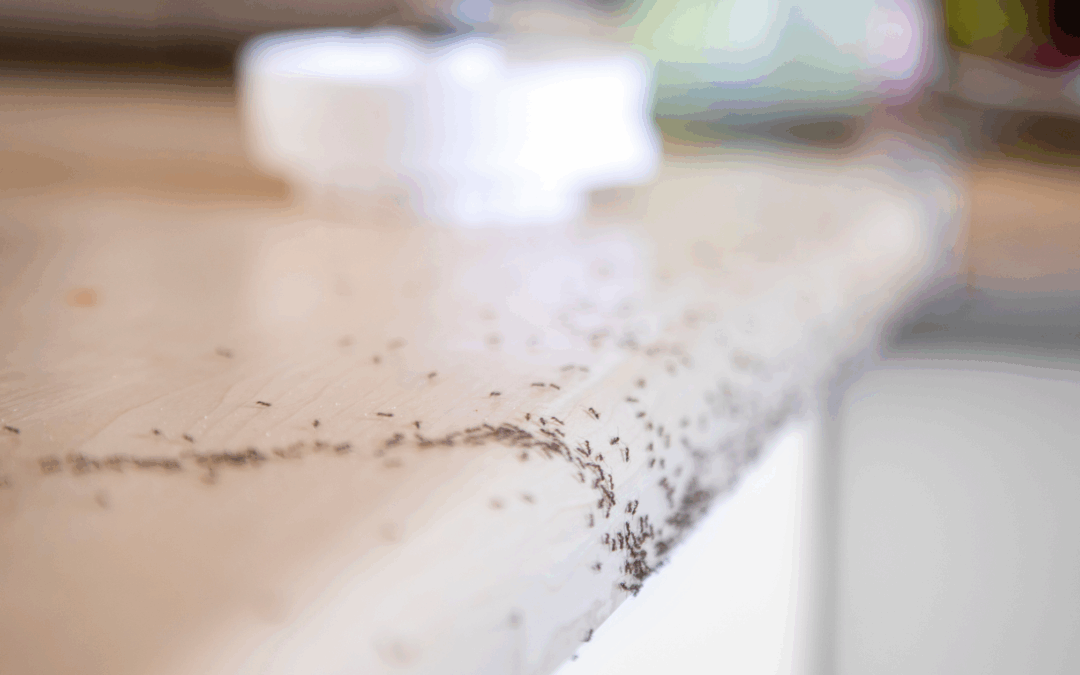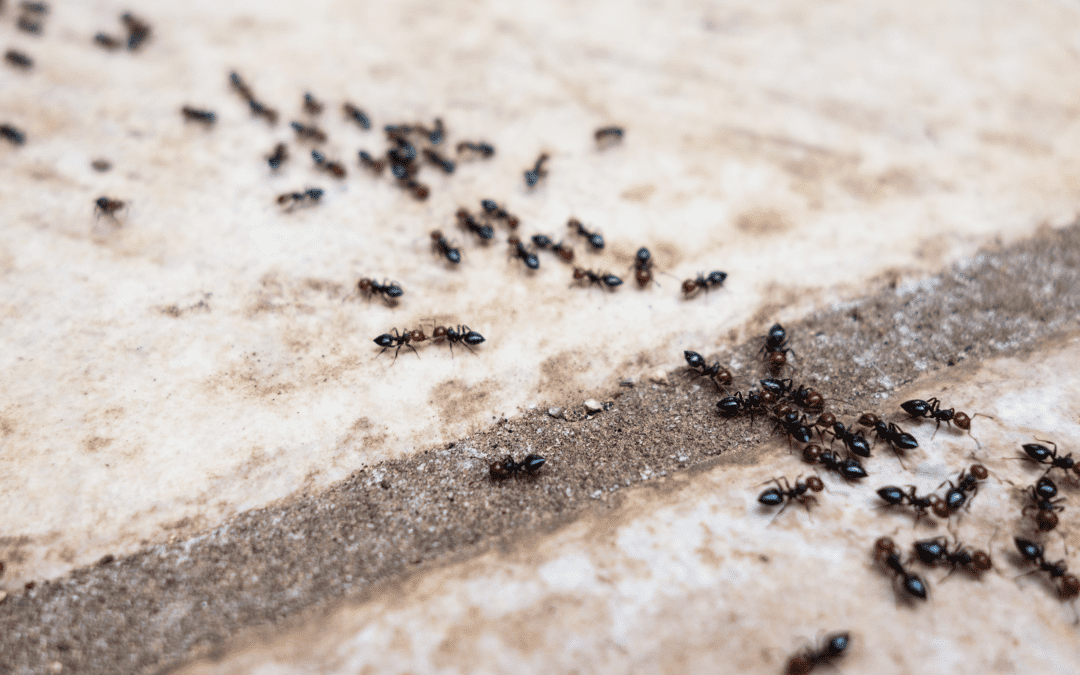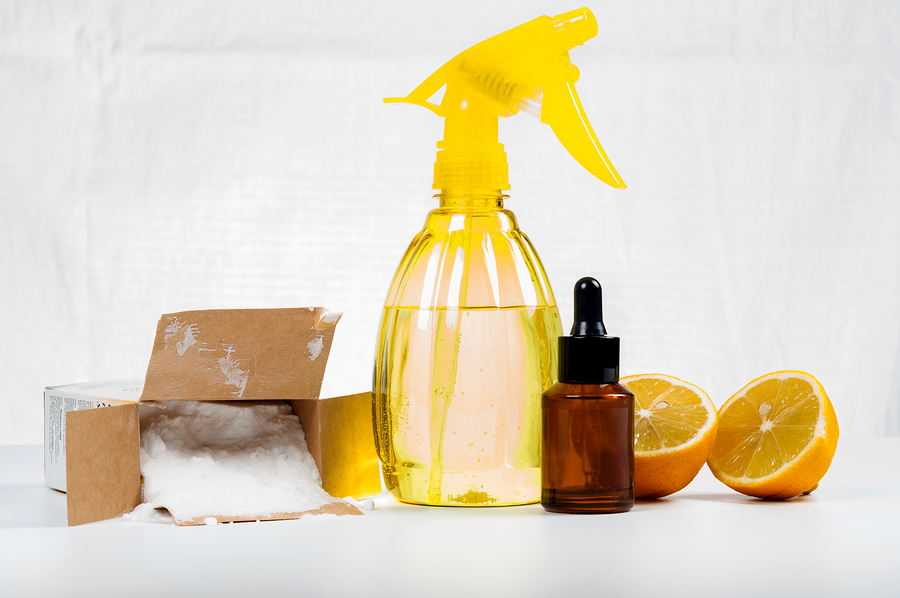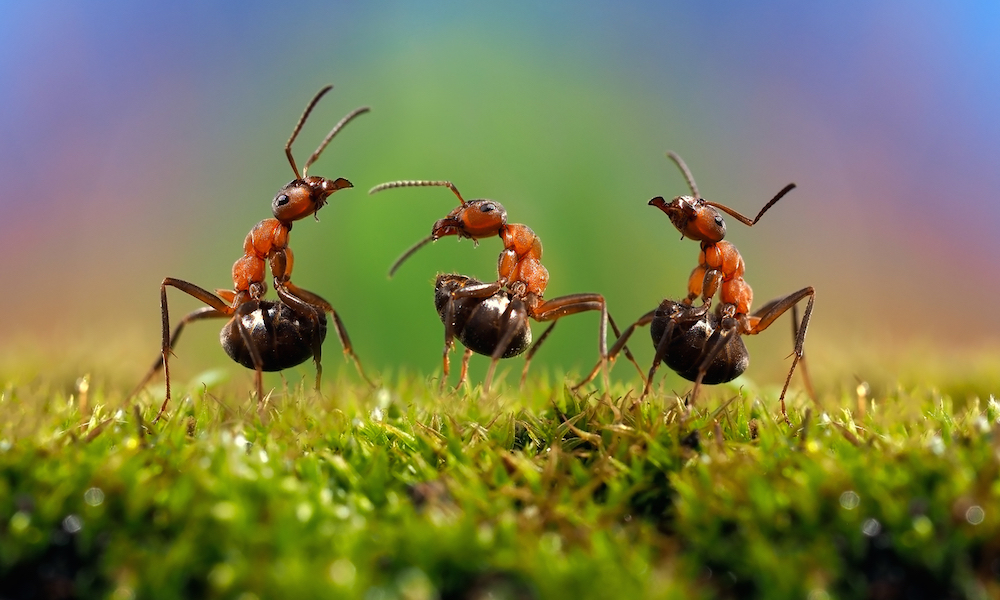READY TO GET STARTED?
REQUEST A FREE ESTIMATE
Fill out the form below or call (888) 466-7849 for a free, no-obligation estimate.

Finding ants in your bathroom can be a frustrating surprise, whether it’s a lone scout or an entire trail marching across your sink. These persistent pests are often drawn to damp spaces and sugary or soapy residues, making your bathroom a prime target. Luckily, you don’t need harsh chemicals to get rid of ants. With eco-friendly methods, you can tackle the problem swiftly and effectively while causing no harm. Here’s how to eliminate ants in your Anniston bathroom the green way, while keeping your family and the environment in mind.
Understanding why ants are in your bathroom is the first step to getting rid of them. Ants are often searching for two things in this space:
Once they’ve found what they’re looking for, ants leave behind a chemical trail for others to follow, expanding the infestation. Addressing these attractants is key to stopping their march.
Ants are tiny and highly flexible, which means they can enter through the smallest cracks or openings. Seal these gaps to prevent their access.
Blocking their pathways sends a clear message that your bathroom is off-limits.
Skip the chemical sprays and opt for natural solutions that are effective yet healthier or your family and pets.
Other natural deterrents like citrus peels, bay leaves, or coffee grounds can also be placed near entry points to keep ants away.
Cleanliness is crucial in making your bathroom less inviting to ants.
By removing their food and water sources, you’ll make it harder for ants to stick around.
Preventing ants from returning is just as important as getting rid of the current infestation. Here’s how you can maintain an ant-free bathroom:
Taking these steps makes your bathroom less appealing to ants and other pests over the long term.
Getting rid of ants in your Anniston bathroom doesn’t have to mean using harmful pesticides. With a few simple changes, like sealing entry points, using natural repellents, and keeping things dry and clean, you can tackle the problem in an environmentally friendly way. Plus, with preventative measures in place, you’ll keep them out for good.
Eco-friendly pest control provided by a pest control company near you will keep your home and the planet, ensuring a healthier, greener future for all!

Ants are known for being annoying and persistent, especially when taking over your yard. It’s important to know what type of ant you’re dealing with to determine how to get rid of them outside your home. Removing them from your yard will lessen the chances of seeing them inside your home. We have broken down the most common ants found in the South and how to remove them from your yard.
These bright or dark red ants love the warm climates of the South. They’re one of the smallest ants around but can be found in very large groups. Since they love the warmth so much, you’ll see fire ants building large underground nests in the sunniest parts of your yard.
They typically don’t become household pests, but because of their sting and the large groups they are found in, they deter families from enjoying time outside. They are known to attack in groups and their sting can become very uncomfortable.
These types of ants can be red or black and can often be mistaken for carpenter ants, although they are much smaller. They only have two parts to their body instead of the usual three. Often found in driveways, along sidewalks, or in other concrete structures, pavement ants can eventually become house pests.
They become house pests due to their continuous search for food and shelter. If they end up inside your home, that usually means there is a nest nearby. They aren’t as aggressive as the fire ant, but they can bite.
If the problem of ants has become more than you can handle, be sure to reach out to your local pest control company and they’ll be able to come up with the best plan of action to rid your yard of ants.

Ants can be one of the most difficult pests to rid your home of and, unfortunately, one of the most common. They’re the number 1 nuisance pest in America, according to pestworld.org!
Here are some ways you can get rid of ants and/or prevent an ant infestation in your home, without using harsh chemicals:

Ants are one of the most common household pest invaders and often one of the hardest to get rid of. Here’s why:
There are over 12,000 species of ants worldwide and about 1,000 here in the U.S. They’re social insects so they live in large colonies, some with millions of ants depending on the species. Ant queens can survive for several years and have millions of ant offspring, compared to many other pests that tend to have shorter lifespans and lower reproduction rates. So it’s likely you have several ant colonies around your home with queens that are reproducing, male ants to mate with the queens, soldier ants to protect the queens and babies, and worker ants to gather food and build anthills, mounds, and nests.
So where are these nests? Larger ant colonies require complex nests that often take up large amounts of space, often covering an acre of land or more! Their nests are usually underground with mounds or anthills that they use to gain access to the nest, in walls, and under fallen trees, rocks, or debris.
The most effective way to get rid of ants or prevent ants is to go after the colony’s queen. An ant colony will usually only survive for a few weeks to months, depending on the colony’s size, after a queen dies since the queen is the only ant in the colony able to reproduce. And colonies rarely replace a queen, therefore the entire colony is dismantled and without purpose. This process can happen naturally, when other ant colonies invade one another, or through targeted, integrated pest management (IPM) techniques. While on-contact pesticides can be effective in killing the ants you’re seeing, they do nothing to eliminate the thousands of ants you don’t see, hiding out in the colony. But because ants work in an organized system, we can “feed” the worker ants traveling to and from the colony poisonous baits. These baits usually contain a sweet substance that ants are attracted to and will take back to their colony to feed to the others (queen included). And because most baits are slow-acting, the ants have time to distribute the poisonous food to the colony before the bait begins to work. When the ants begin to die, the bait continues to work to eliminate other ants in the colony since the dead ants will be eaten by the colony, thereby continuing the spread of poison throughout the colony. This process of colony elimination can take a few days up to 2 or 3 weeks, depending on the size of the colony.
In order to get rid of ants through colony elimination, it’s important that baits are placed in the right areas and that you allow enough time for the bait to work before cleaning up dying or dead ants. If you’re unsure which products to use or how and where to use ant baits, contact your local exterminator. A pest control professional will inspect your home for ant entry points and provide you with a treatment plan that works now and for future ant prevention.

Ants are one of the most common household pest invaders and often one of the hardest to get rid of. Here’s why:
There are over 12,000 species of ants worldwide and about 1,000 here in the U.S. They’re social insects so they live in large colonies, some with millions of ants depending on the species. Ant queens can survive for several years and have millions of ant offspring, compared to many other pests that tend to have shorter lifespans and lower reproduction rates. So it’s likely you have several ant colonies around your home with queens that are reproducing, male ants to mate with the queens, soldier ants to protect the queens and babies, and worker ants to gather food and build anthills, mounds, and nests.
So where are these nests? Larger ant colonies require complex nests that often take up large amounts of space, often covering an acre of land or more! Their nests are usually underground with mounds or anthills that they use to gain access to the nest, in walls, and under fallen trees, rocks, or debris.
The most effective way to get rid of ants or prevent ants is to go after the colony’s queen. An ant colony will usually only survive for a few weeks to months, depending on the colony’s size, after a queen dies since the queen is the only ant in the colony able to reproduce. And colonies rarely replace a queen, therefore the entire colony is dismantled and without purpose. This process can happen naturally, when other ant colonies invade one another, or through targeted, integrated pest management (IPM) techniques. While on-contact pesticides can be effective in killing the ants you’re seeing, they do nothing to eliminate the thousands of ants you don’t see, hiding out in the colony. But because ants work in an organized system, we can “feed” the worker ants traveling to and from the colony poisonous baits. These baits usually contain a sweet substance that ants are attracted to and will take back to their colony to feed to the others (queen included). And because most baits are slow-acting, the ants have time to distribute the poisonous food to the colony before the bait begins to work. When the ants begin to die, the bait continues to work to eliminate other ants in the colony since the dead ants will be eaten by the colony, thereby continuing the spread of poison throughout the colony. This process of colony elimination can take a few days up to 2 or 3 weeks, depending on the size of the colony.
In order to get rid of ants through colony elimination, it’s important that baits are placed in the right areas and that you allow enough time for the bait to work before cleaning up dying or dead ants. If you’re unsure which products to use or how and where to use ant baits, contact your local exterminator. A pest control professional will inspect your home for ant entry points and provide you with a treatment plan that works now and for future ant prevention.